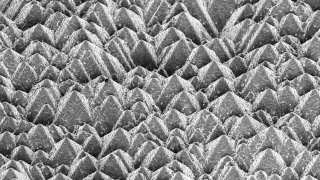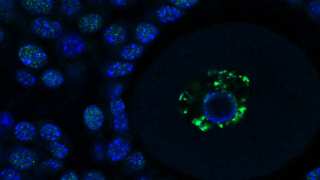The energy storage solutions of the future are thought to be those of the high-tech lithium and carbon variety.
These elements have been converted into various atomic-level shapes and states that are purported to improve on current battery technology when set up along other complementary chemicals.
However, there is another player in the potential high-energy research space that may be less obtrusive when it comes to public attention. This element is, surprisingly, nitrogen, which is already associated with a huge range of important attributes in nature and science.
Some forms of nitrogen are technically capable of impressive levels of energy output, especially when converted to others. Therefore, some researchers assert that it may also be capable of energy storage, if persuaded to take the forms worked out in models and theory. One team of researchers has reported on the attainability of one such form: polymeric nitrogen.
Nitrogen as energy storage
Nitrogen is an abundant element that is found in the atmosphere and on Earth in huge concentrations. It is also be necessary for life, being a component of molecules that are important to the cardiovascular system, nervous system and musculature.
Nitrogen is also used in its liquid forms for many applications in science and industry. However, nitrogen has also attracted the attention of researchers and engineers working on the energy density-rich materials of the future. This is mainly based on some forms of purified nitrogen (N2) and the differences between them. Two units of the element can form diatomic nitrogen with one to three bonds. The triple bond is one of the strongest known to humanity, and requires a huge amount of energy for the conversion to single-bonded di-nitrogen.

Liquid nitrogen. (CC BY-SA 2.0)
The addition of two more bonds to this molecule may be associated with an impressive burst of energy.
Therefore, we may be able to benefit from harnessing this effect using new technology or forms of nitrogen. Doing so may convert a very common element into an effective, sustainable energy source. However, the history of nitrogen energy research has been beset with difficulty, mainly because it is difficult to get the element to shift into desired conformations or energy states. The ideal state of nitrogen for this application is known as polymeric nitrogen. It has a property known as metastability, which requires extreme pressure (approximately 110 gigapascals) for its realisation and maintenance.
One form of polymeric nitrogen (a cubic allotrope of the element) can conserve its metastability at around 25 gigapascals. Most others, however, take relatively complex forms (that are contrary to nitrogen’s natural propensity to form heterogenous structures with hydrogen or carbon, as in nature) that need to be maintained at higher pressures to remain metastable.
These forms have included layers, hollow helices and even diamond-like forms made of nothing but nitrogen atoms. It is a shame that they will not hold together at ambient conditions, particularly as the energy differential between the single and triple bonds potentially present within them are known to be approximately 160 kilojoules per mole (kJ/mol) and one megajoule per mole (MJ/mol) respectively. Therefore, they are technically capable of releasing more energy than any other non-nuclear material.
On the other hand, recent simulations and meta-calculations have given rise to nitrogen polymers that may be metastable at ambient pressure and temperature. In addition, there are also alternatives to homogenous polymers that also offer single or double nitrogen bonds.
They include molecules such as carbon-nitrogen compounds (e.g. C3N12), alkali-metal azides (i.e. KN3, LiN3 or NaN3) or boron nitrides. However, a team of researchers from various physics, materials and geophysics laboratories in the UK, USA, China and Australia have decided to take yet another route to high-energy polymeric nitrogen. This strategy involves using a secondary element to form a nitrogenous ‘scaffold’ and is subsequently removed to leave a pure polymer.
Looking to the future
The team’s lead author, Yinwei Li of the School of Physics and Electronic Engineering at Jiangsu Normal University, designed a project in which simulations showed that recently-discovered nitrogen/helium compounds could be processed into a polymer known as tetragonal nitrogen (or t-N). The team worked out that N4He (which is stable at about 8.5 gigapascals) could be converted to this compound, a lattice-like conformation of pure nitrogen.
The resulting t-N was also projected to be metastable even when pressure was resolved to ambient levels, and to have an energy density of just over 11 kilojoules per gram. This value was impressive enough for the researchers to conclude that their new nitrogen polymer was a potentially viable form of energy storage.
The energy requirements of the future may depend on a refinement of physics and chemistry that enables us to harness forms of energy release and conversion found in nature. These aims seem deceptively simple, but are hobbled by the facts that we do not, at present, have the tools to replicate these single-molecule-level processes synthetically.
However, this project, which has also been published and is available in Nature Communications as of the 19th of February 2018, may be a first step towards mimicking the potentially huge power-sources of living cells and processes. Alternatively, this t-nitrogen, which retains its energetically-favourable structure and bond-lengths at room temperature and pressure, may be the basis of future energy storage. It will be interesting to see if ordinary everyday nitrogen can take on other similarly astounding forms if this line of research continues.
Top image: Liquid Nitrogen Valve. (CC BY-NC 2.0)
References
Li Y, Feng X, Liu H, Hao J, Redfern SAT, Lei W, et al. Route to high-energy density polymeric nitrogen t-N via He−N compounds. Nature Communications. 2018;9(1):722.
Wang X, Wang Y, Miao M, Zhong X, Lv J, Cui T, et al. Cagelike diamondoid nitrogen at high pressures. Physical review letters. 2012;109(17):175502.
Greschner MJ, Zhang M, Majumdar A, Liu H, Peng F, Tse JS, et al. A New Allotrope of Nitrogen as High-Energy Density Material. The journal of physical chemistry A. 2016;120(18):2920-5.
Vos WL, Finger LW, Hemley RJ, Hu JZ, Mao HK, Schouten JA. A high-pressure van der Waals compound in solid nitrogen-helium mixtures. Nature. 1992;358:46.







No comment